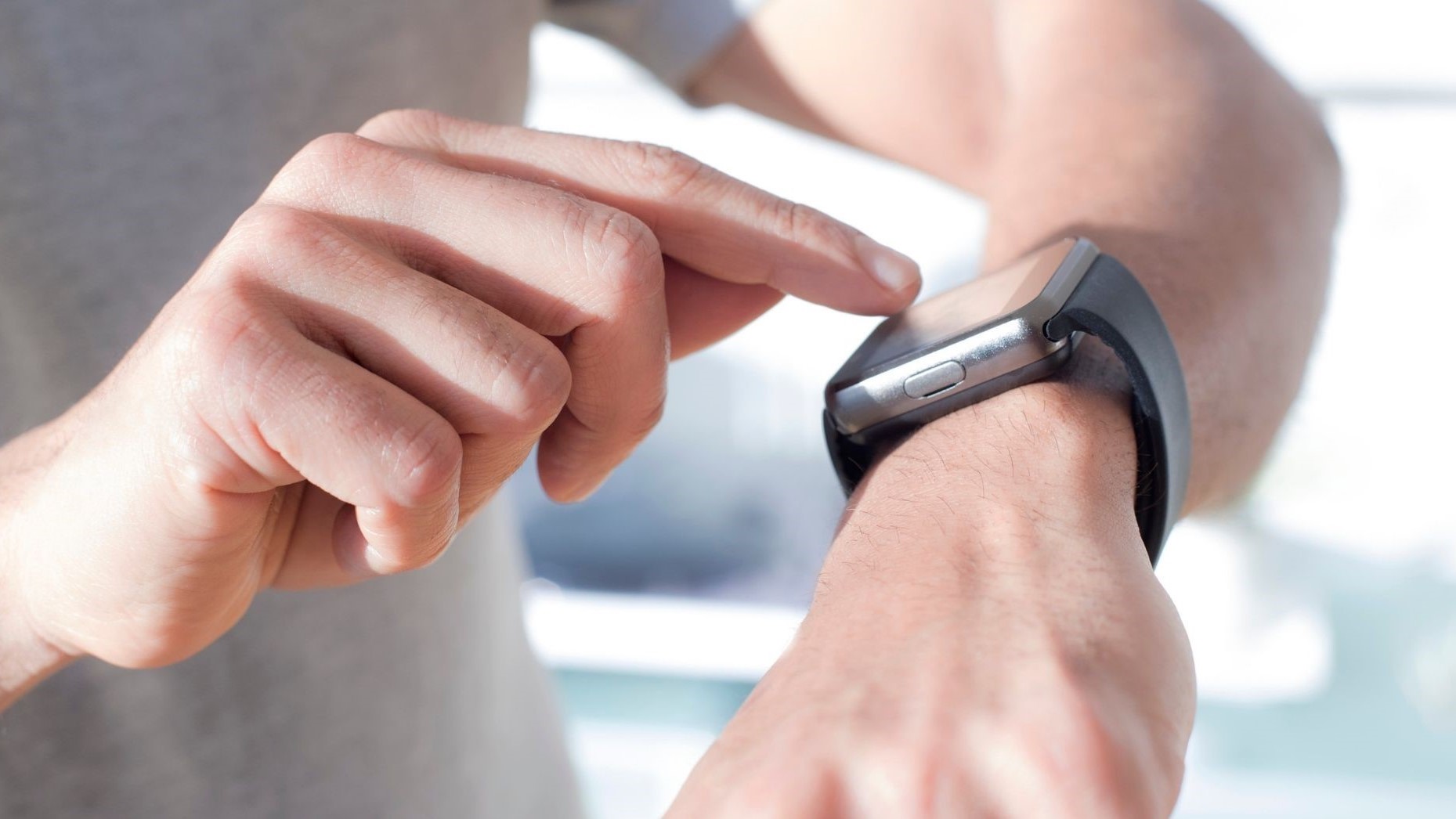How to make sense of the features on your fitness tracker
Fitness trackers can give you some incredibly insightful information - but only if you know how to use them


Wearing a fitness tracker is no longer reserved solely for gym fanatics. You only have to glance around to notice that people of all ages, fitness levels and walks of life are donning a fitness tracker on their wrist.
In fact, a recent survey found that 6 out of 10 of us have pledged to take better care of our overall health and wellbeing since lockdown. And a fitness tracker could be a handy aid in fulfilling this pledge!
Fitness trackers aren't only a means of staying on top of your step count, heart rate and calorie burn. These days, they can also track your sleep, provide GPS data on cycles and runs, chart your menstrual cycle, and even send alerts when your environment is too loud.
Ashton Turner is Director and Personal Trainer at London fitness studio Evolve. He wears two fitness trackers; a Whoop band and a Myzone heart rate monitor.
‘The Whoop band allows me to track a whole host of health markers, including HRV and sleep, which to me are two of the most important aspects to track," he tells me, adding: 'The Myzone heart rate monitor we use for all of our members.
'Heart rate straps are far more accurate than wrist trackers which is why I use the two different ones for different reasons.’
The best fitness trackers will assess a wide range of health credentials, but how do they actually do this - and what does it all mean? Check out our handy guide to some of the most useful features below.
Start your week with achievable workout ideas, health tips and wellbeing advice in your inbox.
Sleep Tracking
Getting a decent seven to eight hours of sleep has become more of a priority than ever before, and tracking sleep can really give you a good insight into the quality of your shut-eye.
‘Like anything, tracking sleep allows you to look at trends and see if you need to make improvements. Lack of good quality sleep can have a detrimental effect on overall health and body composition so tracking it can help to improve these,’ says Ashton.

‘As much as eight hours would be ideal but what is more important is quality. Putting the pressure of eight hours on someone can be too much but improving the sleep they have can be much more effective.’
The best Fitbits - including the Fitbit Versa 2 - allow you to see how long you spend in various ‘sleep stages’. These include Light Sleep, Deep Sleep and REM Sleep. The Polar Unite also offers insightful information into these sleep stages and what they mean.
For a cheap fitness tracker that still offers great sleep insights, the Honor Band 5 is a good choice, plus this tracker actually gives you a sleep score. The aim is to increase this sleep score.
And happily, Apple Watch has finally got in on the act, adding sleep tracking as part of the recent watchOs 7 update.
Some trackers also offer an alert, to encourage you to wind down before bed.
Heart rate
Monitoring your heart rate gives a good indication as to the intensity of your workout (and ultimately how hard you’re working), plus how quickly you’re recovering from exercise.
When it comes to fitness, there are different heart rate ‘zones’. Ashton explains that each tracker will have a different way of expressing zones but they all mean the same thing.
On the Fitbit for example, there is the Peak Zone (where your heart rate is about 85% of its maximum), the Cardio Zone (70-84% of max heart rate), and the Fat Burning Zone, (50-69% of max heart rate).
‘The zones reflect a percentage of your max heart rate and can be used to tailor your workouts,’ says Asthon, who refers to the Myzone heart rate zones.
‘For example if you are doing endurance training and you are in your red zone (90-100% of your max heart rate), you would quickly run out of energy and so will want to reduce your heart rate to sit in your green or yellow zone, usually somewhere between 70-85% of your max heart rate.
‘Just think of it as the higher the heart rate zone the shorter the amount of time you can stay there.’
Some fitness trackers offer additional heart rate information, too. For example, Apple Watch 5 Series can alert you if your heart is showing signs of an irregular rhythm, which could be symptomatic of atrial fibrillation (AFib). This is useful information to take along to the doctors’ the next time you visit.

Apple Watch offers a host of handy fitness features
Heart rate variable
Heart rate variability (HRV) is the variance in time between the beats of your heart and is a great indicator of how your body is recovering from stressors placed on it, such as exercise, a demanding job or money worries.
‘A high variance means your heart beats slower and your body is using the parasympathetic nervous system, or rest and digest system,’ explains Ashton.
Conversely, he adds: 'A low variance means your heart is beating faster and your body is using it’s sympathetic nervous system or fight and flight system.’
The key to recovery is balancing these out.

‘Think of it like a bank balance. For each withdrawal (stress from work, life, money, training) you have to pay money back in to balance the books or you will become overdrawn which in the instance of your health could mean injury, reduced performance or even lack of sleep,’ he adds.
But why is recovery so important?
‘For a number of reasons,’ says Ashton. ‘Firstly your body makes the adaptations to the training stimulus when you are resting.
'You also need to balance the books to ensure your body functions optimally. Too little recovery is counterproductive and can actually stop you reaching your goals.’
Resting heart rate
Your resting heart rate is the number of times your heart beats per minute, when you’re totally still, exerting no energy.
A good time to take this is upon waking, as you lie in bed.
Ashton says that your resting heart rate is a pretty accurate indicator of health and fitness.
‘A low resting heart rate is generally an indicator of a fit and healthy person and is something you can monitor easily. It also tells us when we should push or when we should maybe take it easy.
'If you wake up and your resting heart rate is more than 10% higher than usual, this would be an indicator that you haven’t recovered enough and should perhaps take it easier that day. In elite level athletes, an increase of this could often mean they are not allowed to train.’
GPS
Keen to keep track of all your runs, cycles and walks? Many trackers now provide GPS, which allows you to see your route after running, as well as split times per km, and even the weather conditions.
Unfortunately, the Fitbit Versa 2 still doesn’t provide GPS, so whilst you’re able to track the exercise, you can’t track the actual run.
GPS can allow you to monitor improvements in your exercise, as well as look back on previous runs or walks and assess changes of even if certain conditions could have played a role in a positive or negative change.
Falls
One of the newest features of the Apple Watch (currently available on the Series 4, 5 and all-new Apple Watch Series 6) is a fall detection, particularly useful for seniors.
When the internal accelerator and gyroscope detects a fall, the watch offers the user the option to call the emergency services. If there is no activity for 60 seconds, the emergency services are automatically called, as well as the user's emergency contacts.

Fitbit offers various models of fitness tracker
Step count
When it comes to monitoring activity throughout the day, your step count is a great place to start. Generally, we’re told to walk 10,000 steps a day, and a fitness tracker can help you monitor your progress.
Why 10,000 steps? As Ashton explains, quite simply, movement burns calories.
‘By tracking how many steps you do you can see how active you are in everyday life. This is the easiest way to improve your body composition without having to train more or eat less.’
It’s advised to wear a fitness tracker on your non-dominant wrist, as your dominant wrist may move more throughout the day, causing your ‘step count’ to wrongly increase.
Some fitness trackers such as the Fitbit and Garmin trackers let you clarify which wrist you have chosen to wear it on, which could lead to a more accurate reading.
Calorie burn
When you want to lose weight or you have a specific body composition you want to achieve, knowing your calorie burn is crucial. Whilst other factors do come into play, to lose weight, it’s typically a case of calories consumed versus calories burned. Consistently burn more than you take in, and you will lose weight.
However Ashton reveals that in his opinion, the best heart rate monitors are those worn just below the sternum, offering a more accurate reading when used to calculate calorie burn during workouts.
‘This is because the heart rate is often a truer reflection of the workout, whereas during strength training it might not reflect accurately as your heart rate doesn’t always pick up the effort it takes to move weight.
'Lifting 60kg 10 times requires a lot of energy but it might not raise the heart rate like one minute on an assault bike. If you were to look at just the heart rates and calories it would seem the assault did more in a minute but this isn’t always the case.'
Lucy is a freelance journalist specializing in health, fitness and lifestyle. She was previously the Health and Fitness Editor across various women's magazines, including Woman&Home, Woman and Woman’s Own as well as Editor of Feel Good You. She has also previously written for titles including Now, Look, Cosmopolitan, GQ, Red and The Sun.
She lives and breathes all things fitness; working out every morning with a mix of running, weights, boxing and long walks. Lucy is a Level 3 personal trainer and teaches classes at various London studios. Plus, she's pre- and post-natal trained and helps new mums get back into fitness after the birth of their baby. Lucy claims that good sleep, plenty of food and a healthy gut (seriously, it's an obsession) are the key to maintaining energy and exercising efficiently. Saying this, she's partial to many classes of champagne and tequila on the rocks whilst out with her friends.
